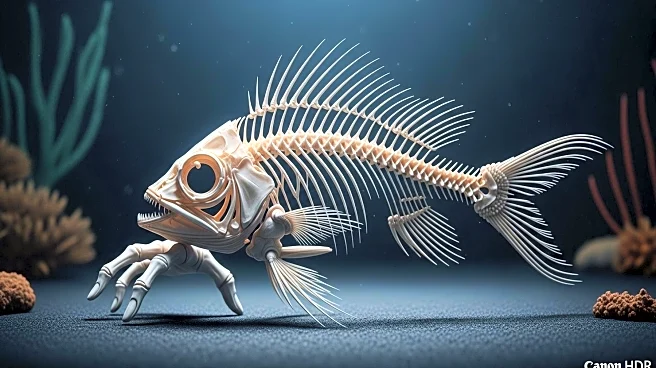What is the story about?
What's Happening?
A recent study has uncovered that the DNA switch responsible for the development of human fingers and toes originated from the genetic regulation of fish cloacas approximately 380 million years ago. This discovery highlights the evolutionary process where existing genetic mechanisms are repurposed for new functions. The research, conducted by a team of US and Swiss scientists, involved comparing the genomes of zebrafish and mice, focusing on the regions adjacent to Hoxd genes, which are crucial for digit formation. The study found that while zebrafish lack digits and some Hoxd genes, they possess the regulatory landscape with DNA switches that originally facilitated cloaca development. Using fluorescent markers, researchers demonstrated that these switches activate digit formation in mice and cloaca formation in zebrafish. The study suggests that as tetrapods evolved from aquatic ancestors, this genetic landscape was adapted for digit development.
Why It's Important?
This research provides significant insights into the evolutionary history of tetrapods, illustrating how genetic elements can be repurposed over time. Understanding the origins of digit formation not only enriches the scientific knowledge of human evolution but also underscores the complexity and resourcefulness of evolutionary processes. The findings could have implications for genetic research and developmental biology, potentially influencing studies on congenital limb malformations and regenerative medicine. By revealing the shared genetic heritage between humans and fish, the study emphasizes the interconnectedness of life forms and the innovative nature of evolution.
What's Next?
Further research is needed to explore the broader implications of this genetic repurposing and to investigate other evolutionary changes that may have occurred over time. Scientists may focus on identifying additional genetic elements that have been repurposed throughout evolution, which could lead to advancements in genetic engineering and biotechnology. The study opens avenues for exploring how similar genetic mechanisms might be utilized in medical applications, such as tissue regeneration and repair.
Beyond the Headlines
The study raises intriguing questions about the ethical and philosophical dimensions of genetic research and evolution. It challenges the perception of human uniqueness by highlighting the shared genetic traits with other species, prompting discussions on the conservation of biodiversity and the ethical considerations of genetic manipulation. The research also contributes to the broader understanding of life's evolutionary journey, encouraging a deeper appreciation of the natural world and its intricate genetic tapestry.
AI Generated Content
Do you find this article useful?














